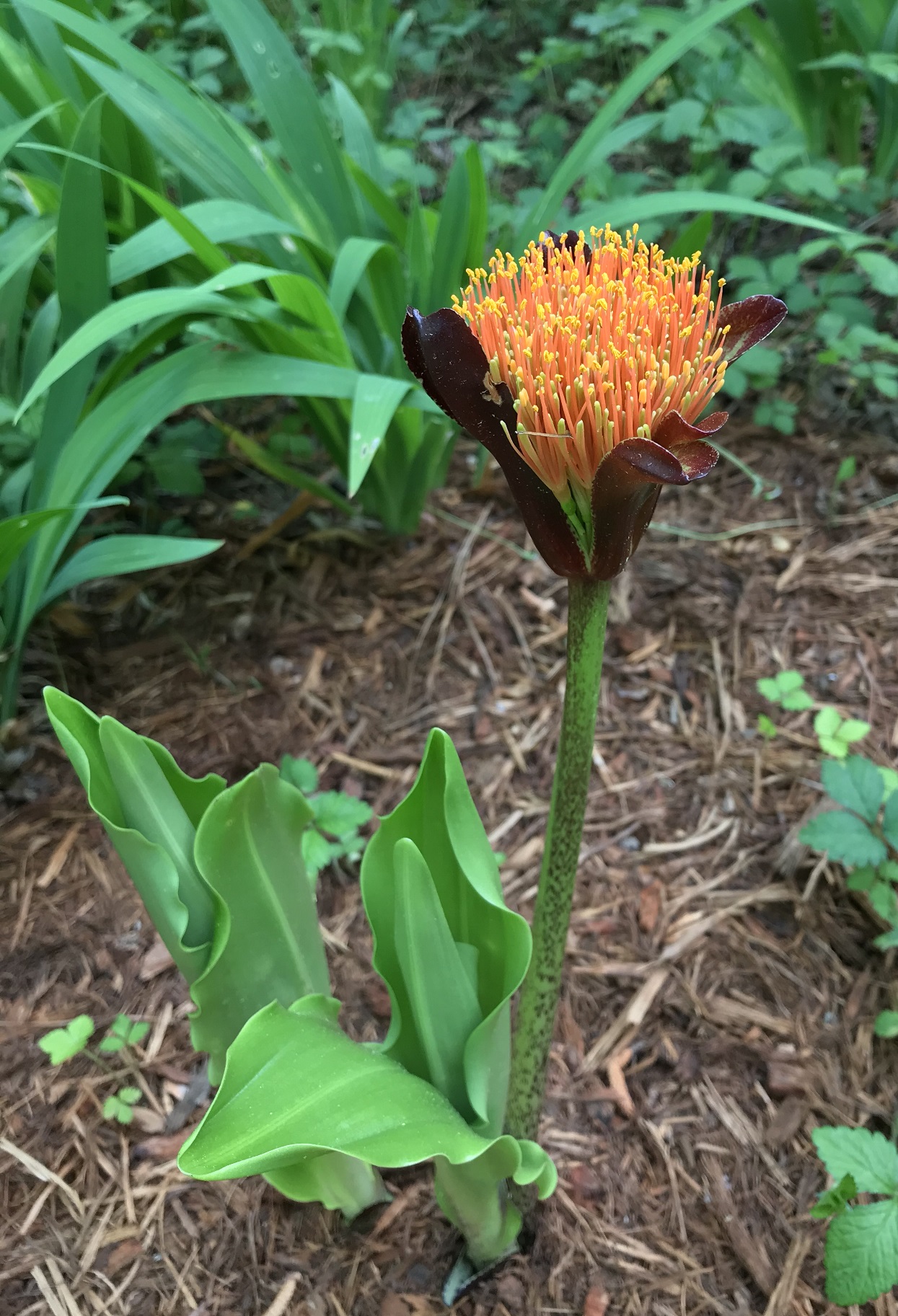
This is exciting! After about six years in the ground, my Scadoxus puniceus has finally decided to flower. I was afraid that I wouldn’t get it to see it in full bloom: The day after I noticed a bud emerging from the mulch, the temperature dropped to 28 F (-2.2 C), so I surrounded it with bubble-wrap and covered it with a large plastic pot. That seemed to be sufficient insulation, because a couple of weeks later I have this beautiful orange inflorescence. The many small flowers are surrounded by petal-like spathes, giving it the appearance of a large single bloom.
Scadoxus puniceus is an African member of the Amaryllidaceae, the daffodil family, so it is not a true lily. Its range in the wild extends from Western Cape Province in South Africa northwards to Tanzania, with disjunct populations in Ethiopia [1}. Given its tropical and subtropical native habitat, it is somewhat surprising that it has done so well in my garden. It has survived temperatures as low as 5.5 F (-14.7 C) when buried under a thick layer of mulch, and despite its reported preference for a dry winter dormancy, it grows in clay that stays wet all winter long.
I suspect it took so long to flower because it is heavily shaded in summer by a large American beautyberry bush (Callicarpa americana). Last year, I planted a couple of young plants in sunnier spots. They survived the winter but are still too small to flower. Maybe next year.
Reference
1. Duncan, G., Jeppe, B., and Voight, L. (2016) The Amaryllidaceae of Southern Africa, Umdaus Press, Pretoria, South Africa.

Outstanding! You don’t know till you try it right. I’ve got a Delosperma congestum I’m hoping will bloom this year. Fingers crossed for a hot dry summer. I started it from seed in ’18 and I live in zone 2b.
LikeLiked by 1 person
Good luck! Hope you see some flowers. I haven’t had the nerve to try any S. African succulents outdoors. At least the bulbs snooze the winter away underground, well below the frost line.
LikeLike
These are super hardy. I’ve grown this one successfully in other gardens in Alberta. The key is great drainage and sun. We’ll see.
LikeLiked by 1 person
As an ex-Capetonian, I am astonished that you have got it to survive, let alone flower in your extreme cold temperatures. In the Western Cape, it would have wet winters and dry summers with very well-drained soil. But further north the summers would be wet. So perhaps that explains its adaptability.
Plantzafrica.com is a great resource for South African plants as it is written by Kirstenbosch staff
LikeLiked by 1 person
Plantzaafrica.com is great; thanks for the reminder. I also love the big Amaryllidaceae book that I referenced, although it is significantly heavier than a computer!
With regard to the cold temperatures, we are lucky here that it almost always gets above freezing during the day, no matter how cold it is at night. Thus the ground only freezes superficially, and subtropical bulbs buried deep can survive. they still have to tolerate wet soil at near-freezing temperatures, though.
It makes sense that a wide-ranging species would have tolerance for winter or summer rain . I have no idea where this plant originated (apart from eBay), but I wonder if it might be from higher altitude, giving it a little more cold tolerance. But then, it also does well in our long, hot summers. All round, a surprisingly good performance for this little plant.
LikeLike